Installation
Manual Installation
Manual installation is the most widely used form for installation of the FEY sealing rings. Because these components are precision engineered and manufactured, care must be taken during installation not to damage the rings. The following points will guide you to smooth installation by hand.
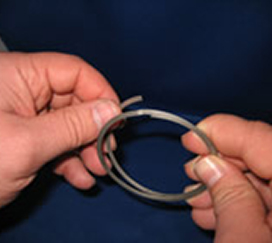
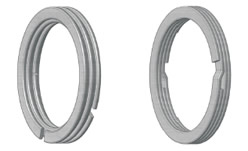
Ring Gap Orientation
The ring gaps should be oriented so a leak path is not created from one ring to the next. In pairs, ring gaps should be oriented approximately180° apart. For sets of three, ring gaps should be approximately120° apart. In sets of four, adjacent ring gaps should be at least 90° apart.
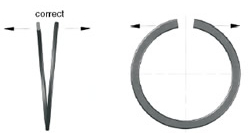
Axial Spreading
Single and double wound rings are manually installed into the grooves by axially spreading the rings at the ring ends. Care must be taken to ensure the rings are not overstretched. If rings are overstretched, they will become permanently deformed. Rings should not be spread radially during installation.
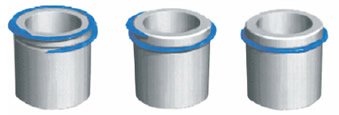
On Shaft
1) Start by spreading the ring axially (see Axial Spreading section above)
2) Insert the ring end into the groove
3) Rotate the ring into the groove until it is completely installed
4) Check to make sure ring gaps are oriented properly
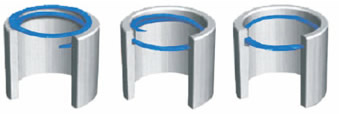
In Bore
1) Start by spreading the ring axially (see Axial Spreading section above)
2) Insert the ring end into the groove
3) Rotate the ring into the groove until it is completely installed
4) Check to make sure ring gaps are oriented properly

Ring Overlap
During installation of the single and double wound rings, care must be taken not to spiral the ring ends into adjacent rings that are already installed. Also, during installation of the double wound rings, care must be taken not to reverse the location of the ring end in relation to the bend at the gap.

Special “IS” Ring Considerations
1) The installation of IS ring into dual grooves is only possible when housing grooves are accessible from both sides.
2) Spiraling IS rings with increased cross sections (RB) into housing bores is not possible. They must be installed into a groove formed by an end plate or a DSB retaining ring.
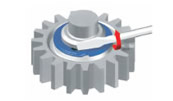
Retaining Ring Disassembly
Disassembly of the retaining rings is easily accomplished with the aid of a flat bladed screwdriver. Insert the blade of the screwdriver into the disassembly notch at the ring end and rotate until it is removed from the groove. Continue to spiral the rest of the ring out of the groove. Please verify all dimensions are within manufacturing specifications prior to reusing a retaining ring.